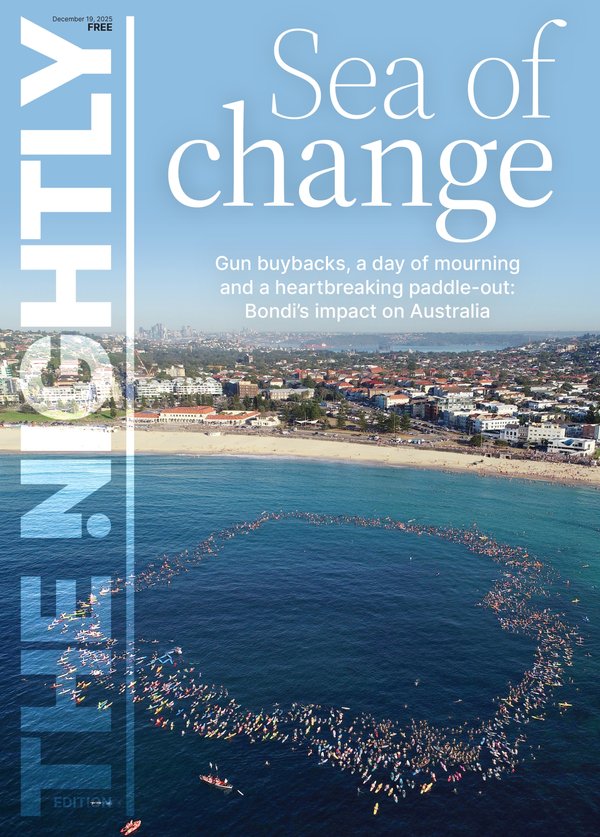Reserve Bank interest rates: Lift in headline inflation clouds picture for borrowers heading into 2026

A sharp rebound of inflation will “unsettle” the Reserve Bank and dampen any hopes of a September rate cut, even as Treasurer Jim Chalmers attempts to paint a rosy outlook.
Annual inflation surged from 1.9 per cent to 2.8 per cent in July, according to the Australian Bureau of Statistics.
That was the fastest pace since mid-2024 and will give the RBA a good reason to wait until November before considering further relief for borrowers.
Sign up to The Nightly's newsletters.
Get the first look at the digital newspaper, curated daily stories and breaking headlines delivered to your inbox.
By continuing you agree to our Terms and Privacy Policy.But the big jump will be viewed with caution as the data is notoriously unstable and was heavily impacted by government power bill rebates.
Dr Chalmers brushed off the numbers on Wednesday, declaring the country had made “substantial and sustained progress” fighting inflation.
“This is the eighth month in a row that headline and underlying inflation have come in below three per cent,” he said.
“Volatile and one-off factors, including the end of state energy rebates, travel prices and fuel were behind the increase in today’s results.
“We know monthly inflation figures can jump around and are less reliable than the quarterly figures.”
Yet even as he puts on a brave face there will be the lingering concern that Australia has popped the champagne cork prematurely in the inflation battle.
There were signs that pressure was wider than just electricity prices, which surged 13 per cent thanks to the timing of government power rebates.
Core inflation — watched by the RBA as it strips out volatility — jumped from 2.1 per cent to 2.7 per cent.
Clothes were becoming more expensive, travel costs lifted and key services of health and education remain stubbornly above the pack.
A September rate cut was always unlikely given the RBA’s preference for moving every three months.
However, November’s meeting would be live for a decision as the central bank’s board will have more data to get a clearer picture on cost of living.
Dr Chalmers and Australia’s borrowers will be hoping the next batch of quarterly inflation numbers bring better news.
The pressure will also be on RBA Governor Michele Bullock’s board after clearly signalling earlier this week that borrowers should expect one or two more cuts in the next six months.
eToro analyst Josh Gilbert said Wednesday’s data suggested price pressure was “stickier” than hoped — meaning inflation would be harder to slow.
“The data will be a setback for those expecting continued easing after the rate cut earlier this month,” he said.
“While the RBA has signalled more easing is likely, today’s figures reinforce the board’s cautious stance and reaffirms that fighting inflation is no easy task.
“Markets still expect another cut before year-end, but if we see more reports similar to this, that expectation will diminish.
“Let’s be clear though, this is just one print. The board prefer to focus on quarterly data, but there’s no doubt this will unsettle the board.”
Moody’s Analytics’ Sunny Kim Nguyen said the data “complicates, but should not derail” the move towards further rate relief.
While the rise reflected “temporary factors” she warned that “price pressures may be more entrenched than recent data suggested.”
History shows that cost of living pressure can quickly bounce back even when the dragon appears to be slayed.
American inflation has also been gently rising in recent months and remains stubbornly above the United States Federal Reserves’ 2 per cent target, slowing rate cuts in the world’s biggest economy.
The story is similar in the United Kingdom, where prices lifted 3.8 per cent in the most recent numbers.
The Bank of England’s Catherine Mann reportedly warned overnight that the country’s inflation would remain above target until mid-2027 — an extraordinary period of cost of living pain after the pandemic.
Closer to home, the RBA will need to consider that the inflationary impact of three rate cuts so far this year will take some time to become visible in the data.
Economists will hotly debate whether Wednesday’s numbers indicate a broader trend of bad news.
“There were several key drivers that pushed headline inflation higher that will likely unwind and so are not a major concern,” Commonwealth Bank’s Harry Ottley said.
He said there had been two major surprises — the impact of power credits and travel — which had meant inflation was much higher than the bank had forecast.
“Electricity prices continue to be volatile due to the timing of Commonwealth Energy Bill Relief Fund,” Mr Ottley said.
“In July, NSW and ACT did not receive the first instalment of the fund.
“(But they will) receive an instalment in August which means electricity prices will likely fall in in the month.”
KPMG chief economist Brendan Rynne also pointed to the inconsistent power rebates on the east coast as a key factor and predicted the numbers would fall again next month.
But HSBC’s Paul Bloxham warned the case for more rate cuts had weakened.
“It would be easy to dismiss today’s (price) reading, given that it is just a narrow and volatile partial measure of inflation,” he said.
“However, the upside surprise today was substantial and big moves in partial indicators can often have signal value.”
He said the hotter than expected numbers were driven by more than just one or two categories.
“We should pay some attention to this,” Dr Bloxham said.
“Our central case is that the RBA will only be able to cut by a further 50 points in this easing phase, in November 2025 and February 2026, but we see the risks as clearly weighted to less easing than this, rather than more.”
